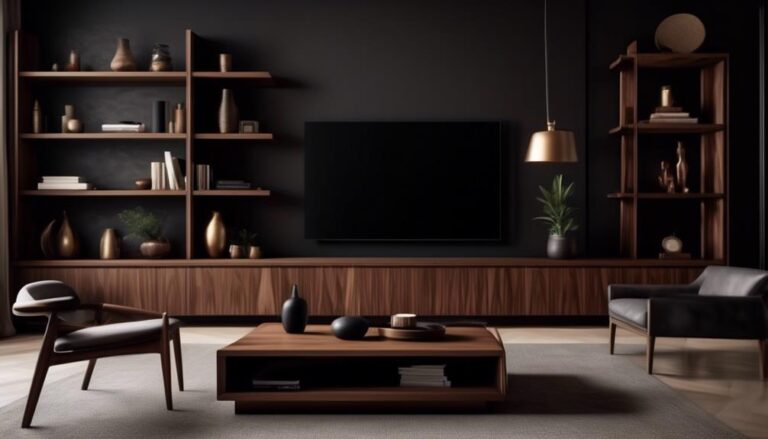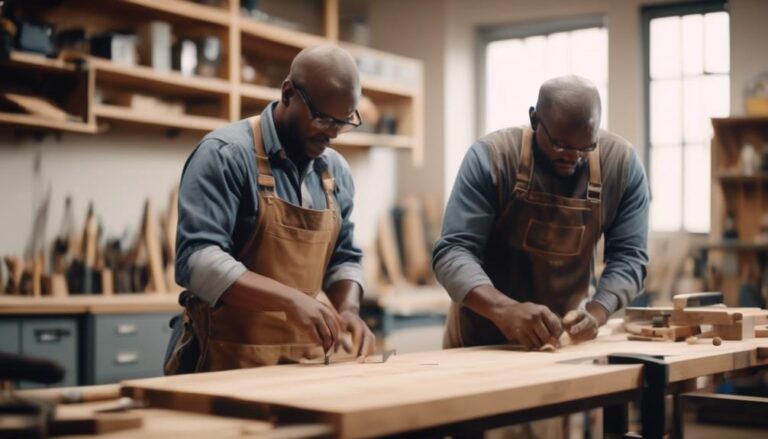Embarking on the journey of crafting custom wooden chairs in South Africa, you're looking for ways to ensure your creations not only stand out in beauty but are also a testament to quality craftsmanship. The process, rich with tradition and creativity, presents its unique set of challenges – from selecting the right type of wood to mastering the intricacies of design that cater to both aesthetics and functionality.
With a keen understanding of these hurdles, this guide is crafted to navigate the nuanced art of chair making, drawing from a wellspring of experience in the field.
Understanding the desires of enthusiasts and professionals alike who strive to elevate their craft, this article speaks directly to your aspirations and concerns. Through a blend of expertise and a deep appreciation for the craft, we'll explore essential tips that promise to refine your approach, ensuring each piece resonates with your intended audience.
As we delve into the heart of creating exceptional wooden chairs, you're invited to discover insights that not only address your questions but also inspire your next masterpiece. Continue with us on this detailed exploration, where your passion for chair making will be met with the knowledge and inspiration you seek.
Choosing the Right Wood
When crafting custom wooden chairs, selecting the appropriate wood species is a crucial decision that requires careful consideration of various factors such as grain patterns, longevity, desired finish, and the intended use of the chair.
The type of wood chosen plays a significant role in the overall quality and durability of the chair. For custom made furniture, solid wood is often the preferred choice due to its strength and natural beauty.
Different wood types have distinct grain patterns that contribute to the aesthetic appeal of the chair. Oak, for example, offers a prominent grain pattern that adds a touch of elegance to the chair. On the other hand, pine has a softer grain pattern that suits a more rustic or casual style.
Longevity is another important factor to consider when choosing the right wood for custom wooden chairs. Hardwoods like oak and teak are known for their durability and resistance to wear and tear. These woods are particularly suitable for outdoor chairs that are exposed to harsh weather conditions.
The desired finish of the chair is also influenced by the type of wood used. Some wood species, like cherry or mahogany, have a rich and dark color that enhances the elegance of the chair. Others, such as maple or ash, have a lighter color that gives the chair a more contemporary look.
Lastly, the intended use of the chair should be taken into account when selecting the wood. For indoor chairs, softer woods like pine or cedar are often used as they provide a comfortable seating experience. On the other hand, hardwoods like oak or teak are preferred for outdoor chairs due to their resistance to moisture and insects.
Designing for Comfort and Functionality
After carefully considering the appropriate wood species for crafting custom wooden chairs, the next step is to design the chairs for optimal comfort and functionality. Designing for comfort and functionality is crucial in creating custom furniture that meets the needs and desires of the user.
Here are three important factors to consider when designing wooden chairs:
- Ergonomics: Ensure the chair's design is ergonomic and supports the body's natural posture for long-term comfort. Consider factors such as seat height, backrest angle, and seat depth to create a chair that promotes proper body alignment and reduces strain on the muscles and joints.
- Functionality features: Incorporate features that enhance the chair's functionality and convenience. Armrests provide support for the arms and shoulders, while lumbar support helps maintain the natural curve of the lower back. Seat depth adjustment allows users to customize the chair to their specific needs, ensuring maximum comfort.
- Durability and maintenance: Consider the material's durability and maintenance requirements to ensure longevity and ease of care. Choose wood species that are known for their strength and resistance to wear and tear. Additionally, consider finishes that protect the wood from scratches and stains, making the chair easier to clean and maintain.
Precision Joinery Techniques
Precision joinery techniques are essential in creating custom wooden chairs of the highest quality and durability. These techniques involve intricate measurements, cuts, and assembly to create seamless and strong connections. Common precision joinery techniques used in crafting custom wooden furniture include dovetail joints, mortise and tenon joints, and finger joints.
Dovetail joints, known for their interlocking design, provide exceptional strength and resistance to pulling forces. They are commonly used in the construction of chair frames, ensuring stability and longevity.
Mortise and tenon joints, on the other hand, involve the insertion of a projecting tenon into a corresponding mortise, creating a strong and reliable connection. This technique is often used to join chair legs to the seat or the backrest to the frame.
Finger joints, also known as box joints, are created by interlocking fingers cut into the ends of the wooden pieces. This technique is commonly used in creating chair armrests and adds both aesthetic appeal and structural integrity to the piece.
Crafting custom wooden chairs requires skilled craftsmanship and attention to detail. Precision joinery techniques not only contribute to the overall aesthetic of the chair but also ensure its structural integrity and durability. By employing these techniques, custom wooden chairs can be crafted to withstand the test of time and provide comfort and functionality for years to come.
Finishing Touches: Staining and Polishing
Crafting custom wooden chairs with precision joinery techniques sets the foundation for creating a durable and high-quality piece, and now it's time to explore the essential finishing touches: staining and polishing. These final steps are crucial in enhancing the natural beauty of the wood and giving the chair its unique character.
Here are three key considerations for achieving the perfect finish:
- Use high-quality stain and polish: Investing in top-notch products will ensure a long-lasting and visually appealing result. Look for stains and polishes specifically designed for furniture to achieve optimal effects.
- Complement the design and style: Select a stain and polish that harmonizes with the overall aesthetic of the chair. Consider the color scheme, the type of wood used, and the intended atmosphere of the room where the chair will be placed.
- Apply multiple coats for depth and richness: To achieve a deeper color and a richer finish, apply several coats of stain. Each layer will add dimension and depth to the wood, enhancing its natural grain and beauty.
Ensuring Longevity: Maintenance and Care
To ensure the longevity and pristine condition of your custom wooden chairs, it is essential to implement a comprehensive maintenance and care routine. Regular cleaning and dusting are crucial to prevent the buildup of dirt and grime, which can damage the wood over time. Use a soft cloth or a feather duster to remove any debris from the surface of the chairs. Additionally, applying wood polish or wax every few months will help maintain the wood's luster and protect it from drying out.
It's also important to check for any loose joints or screws and tighten them as needed. This will ensure the structural integrity of the chairs and prevent any accidents or injuries.
Furthermore, keeping the chairs away from direct sunlight and extreme temperatures is crucial to prevent warping or fading of the wood. Exposure to these elements can cause the wood to expand or contract, resulting in cracks or damage.
In case of any spills or stains, it is crucial to promptly clean and dry the affected area. This will prevent any damage to the chair's finish and maintain its overall appearance.




